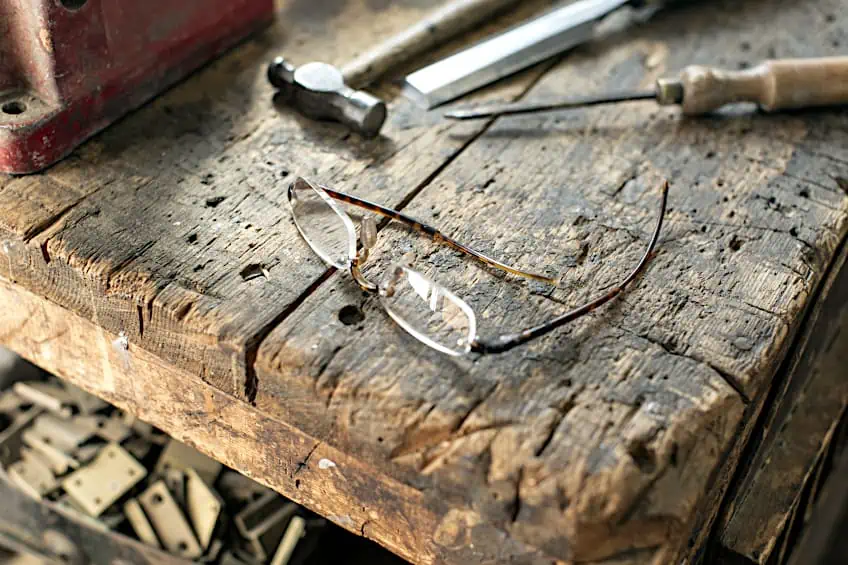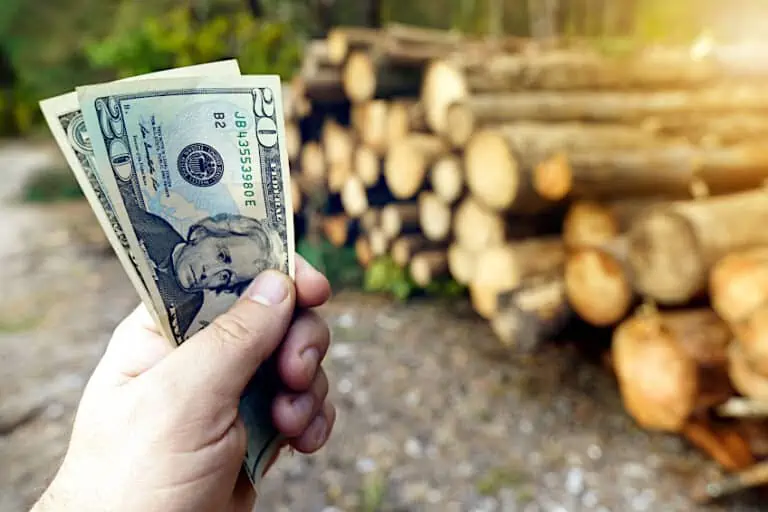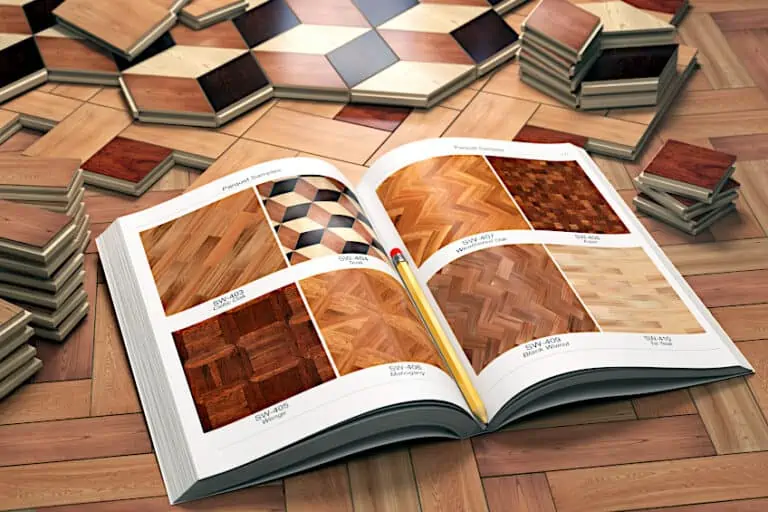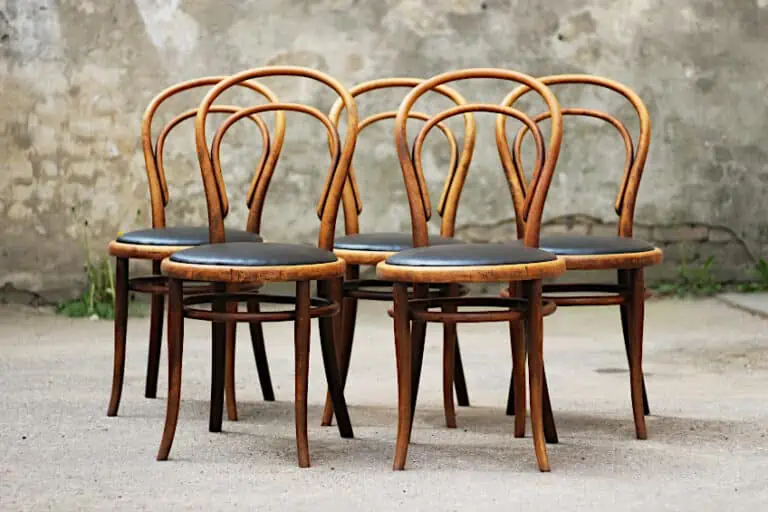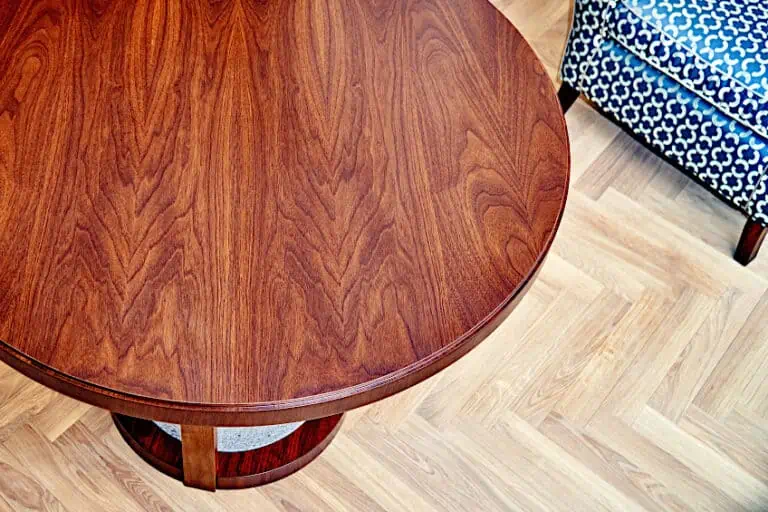Best Wood for Workbench – Timber That Can Take the Punishment
Whether you started wood-crafting when you were a kid or you’ve recently picked up a tool for the first time, at some point in your crafting journey, you’re going to realize that (if you haven’t already) you need a workbench. This realization means a lot. Firstly, it means that you’re probably on your way to starting your own little workshop, and secondly, it means that you’ve decided to make wood crafting (or any other craft that requires benchwork) a permanent fixture in your life. This being said, you’re probably wondering what the best way is to go about making your first workbench. After all, there are loads of designs and materials you can use to make a custom bench, but it can take some time to sort through all your options. While the shape, size, and positioning of your workbench are up to you, we can make a few recommendations regarding the best wood for workbench surfaces, as well as what type of wood to use for the legs of your bench. So, without further ado, let’s have a look at why worktops are made of wood, which is the best wood for workbench surfaces, and why.
Table of Contents
Why Should You Choose a Wooden Workbench Surface?
Have you ever asked yourself why the surfaces of most heavy-duty workbenches are made of wood? Surely there are other materials out there that would make better desktops compared to wood? Well, even though there are materials that are objectively better than wood, there aren’t any good options when it comes to fulfilling the function of a workbench.
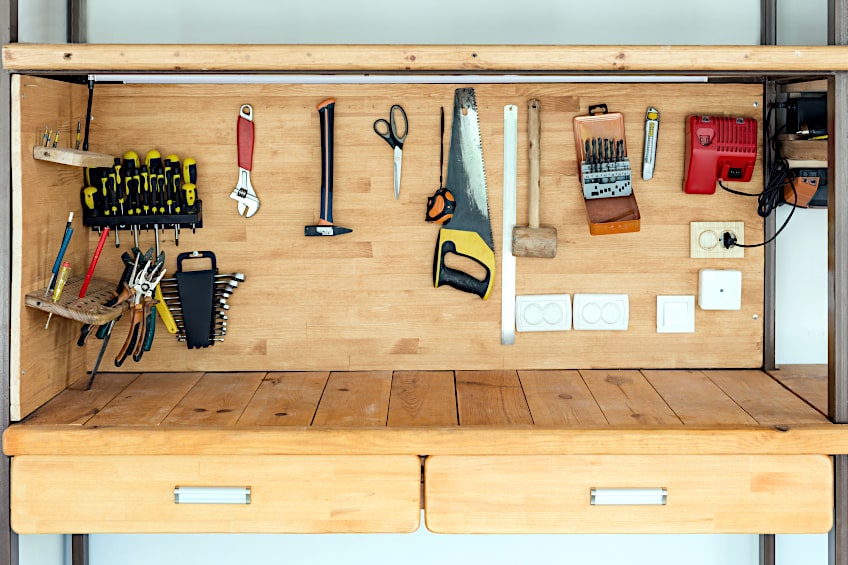
Now, you might be thinking that metal or stone workbenches are a possibility and you’d be completely correct. However, if you have yourself a quick peek at how much a metal workbench will cost you, and compare it to the price of a couple of boards of lumber, you’ll understand why metal workbenches are so rare. Stone workbenches on the other hand are even more expensive, especially if you’re considering a highly durable material for the worktop of your workbench.
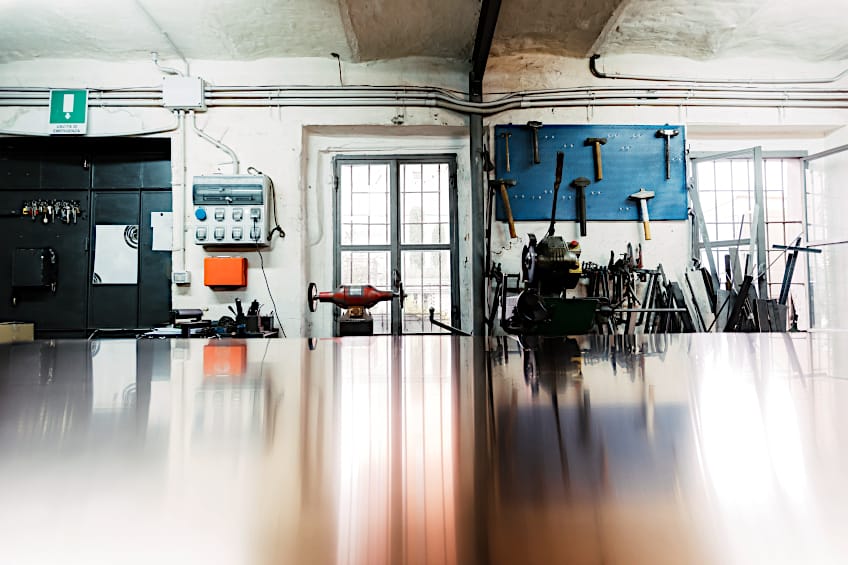
Stone and metal workbenches are also extremely heavy, and tricky to move around, and don’t really fit the application of wood-crafting, as well as wood does. Pretty odd that wood is the best surface to work with wood on huh? Well, this is just one of the many reasons that wood has traditionally always been chosen as the surface material for woodworking workbenches.
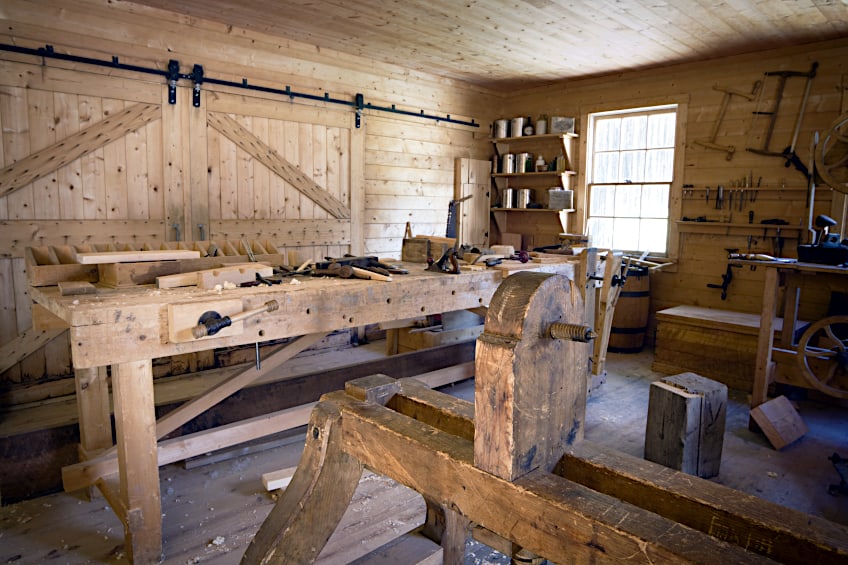
Wood seldom damages wood, and besides the fact that it won’t damage your workpiece, a wooden workbench has a good rigidity to flexibility ratio. This means that wood is soft enough to absorb impacts and stress while being rigid enough to maintain its structural integrity and support a load without caving in like metal would or shattering as stone would.
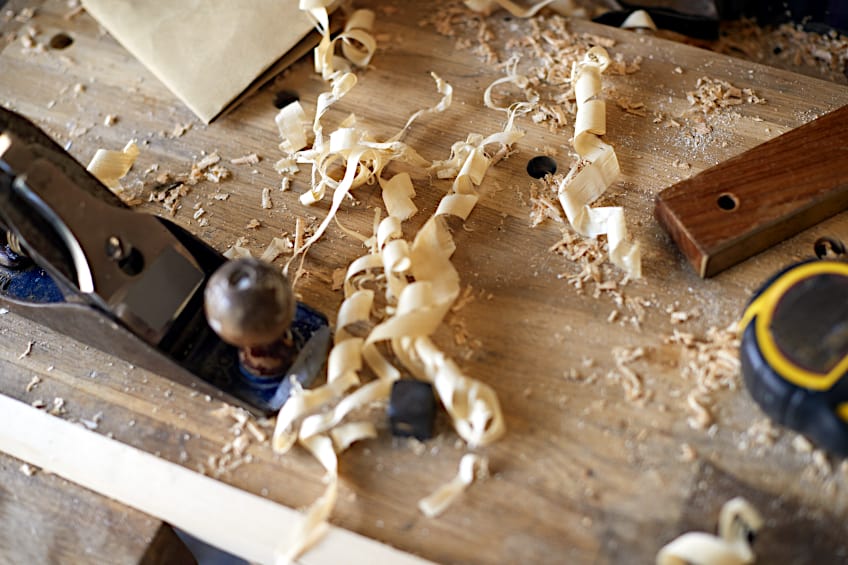
The type of wood that you choose is pretty important too. A typical woodworking workbench is made of dense hardwood species, and this is to ensure that the workbench will last and not chip away over your lifetime. The better the wood is, the longer your woodworking workbench will last, and the less you have to worry about having to replace your bench any time soon.
Should You Use a Hardwood or Softwood to Make Your Workbench Surface?
This is a bit of a tough question to answer considering that both hardwoods and softwoods have their respective pros and cons. It really does come down to the type of work you’ll be doing, what your budget is, and whether you’re equipped to deal with the wood you’ve chosen, specifically if your tools set can handle it. This being said, let’s have a look at some of the advantages and disadvantages of both hardwood and softwood.
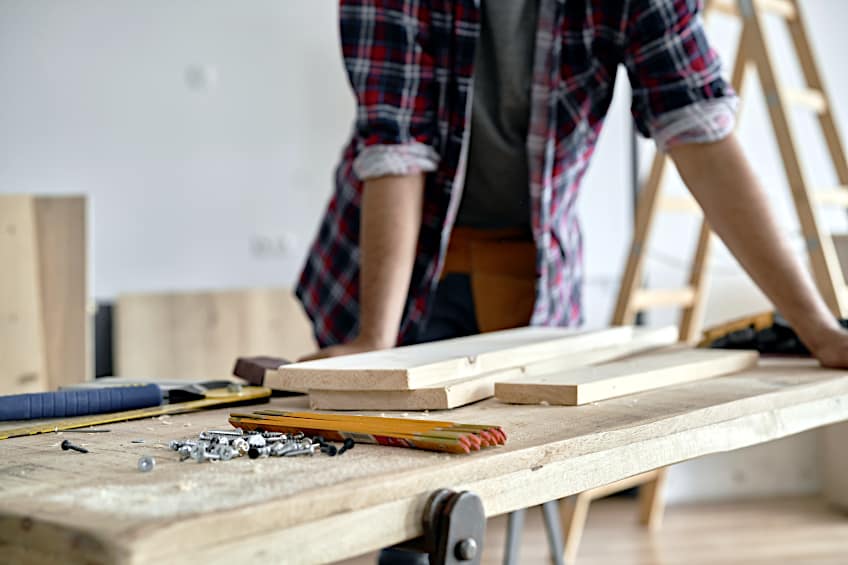
Hardwood Workbench Top
If you’re thinking about going with a hardwood workbench top, there are a few things you should take into consideration. First off, you should know that hardwood species in general are a bit more expensive compared to softwood species. This means that a solid piece of hardwood cut to the size of a tabletop is going to cost you noticeably more compared to the same size of the board in a softwood species.
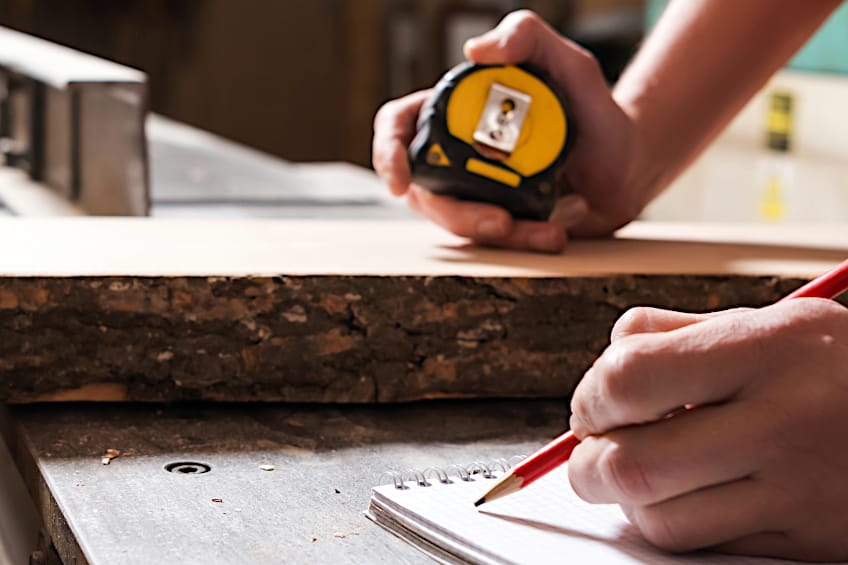
Besides being more expensive, hardwoods are (as the name suggests) harder than softwood species. This is because their wood grain is packed more densely, therefore making their structure more rigid. This means that while the hardwood is perfectly capable of absorbing shock, it won’t exactly be a comfortable experience, especially if you’re chiseling away at a workpiece for a long period of time.
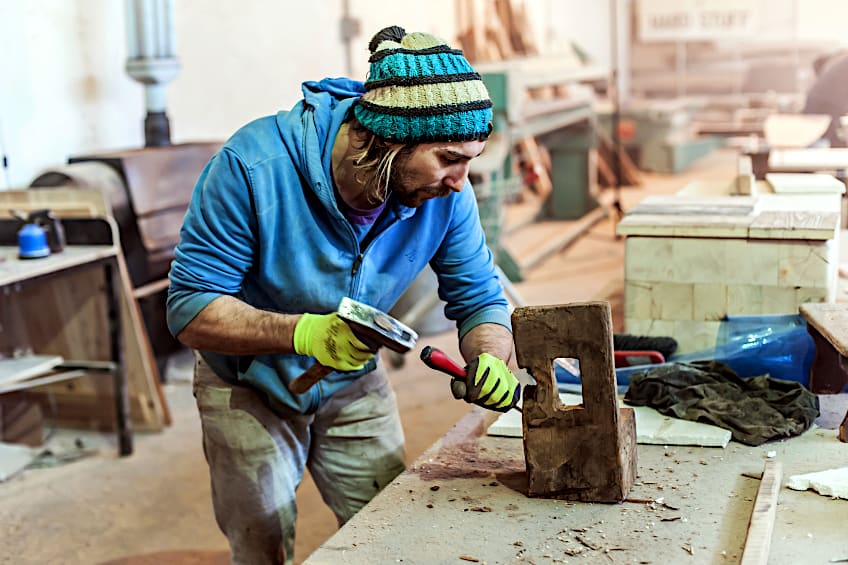
Its density and stiffness also mean that hardwoods are typically a lot heavier than softwood species. Lifting a hardwood workbench top can be a two-man job if the tabletop is large enough, and if you’re constructing your table all on your own, it means that you’re going to have to get a bit creative when it comes time to hoist your tabletop onto your frame.
On a more positive note, a hardwood workbench top is extremely sturdy which means it can take a ton of abuse from tools like chisels and hammers over the years without so much as batting an eye at you. Its density also means that it’s capable of supporting heavy loads, so if you ever find yourself needing to do some close-up work on a large workpiece, your hardwood desktop has your back.
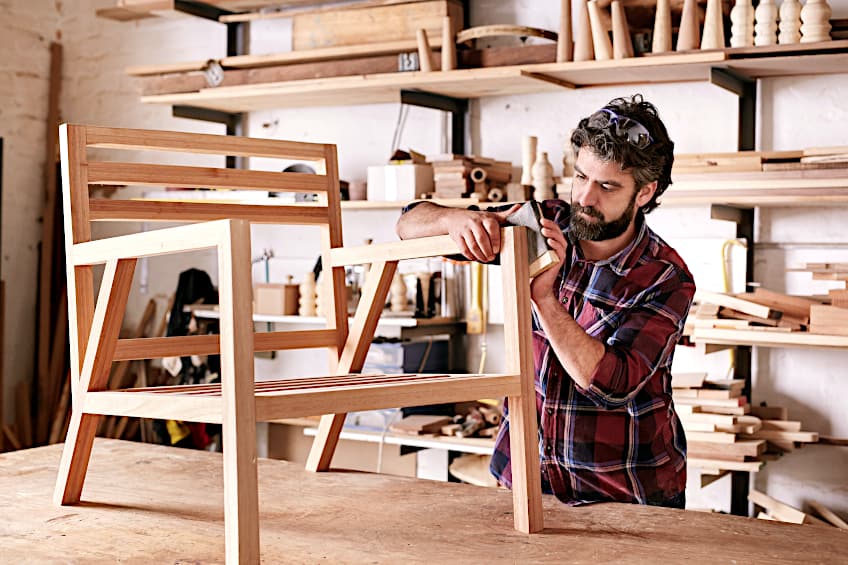
Having a workbench that is near indestructible is pretty neat, as long as you’re willing to put in the time and effort it takes to make a hardwood workbench. We mention this because most hardwood species affordable enough to be used in the construction of a workbench top can be challenging to work with. It can take some considerable planning and the right tools for everything to come together as intended.
- Good load-bearing capabilities
- Does not damage easily
- Extremely durable
- Great stability thanks to its weight
- Extremely rigid
- Heavy
- Can be challenging to work with
- Expensive
- Poor shock distribution
Softwood Workbench Top
Like hardwood, softwood workbench tops have their own district advantages and disadvantages. These characteristics can either work for or against you depending on the type of work that you’ll be doing on your workbench, so it’s always a good idea to be realistic and honest with yourself when choosing between a hardwood or softwood workbench top.
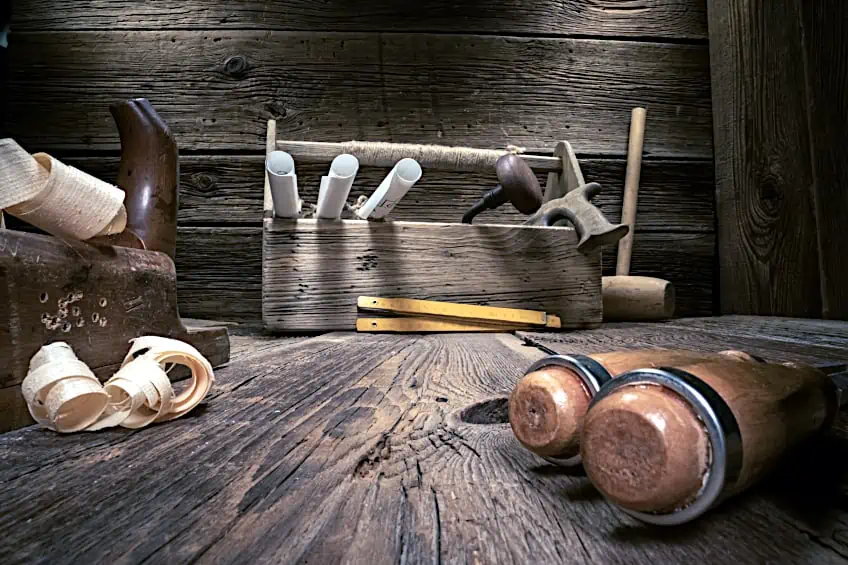
If you don’t know what softwood is, it is essentially a number of wood species that grow quickly and tend to have less dense wood grain compared to hardwood species. Hardwoods grow a lot slower and have denser wood grain compared to their softwood counterparts, and this makes softwood species a lot easier to cut, carve, and craft in general, but it’s not without its detractors.
Building a workbench from softwood can be a lot easier because of its softness (surprise!), and therefore building a workbench from these wood species is a lot more common especially if the person in question will be doing hobby work or no particularly specialized form of wood-crafting. Although, a workbench made of softwood isn’t quite as sturdy or durable as one made of hardwood.
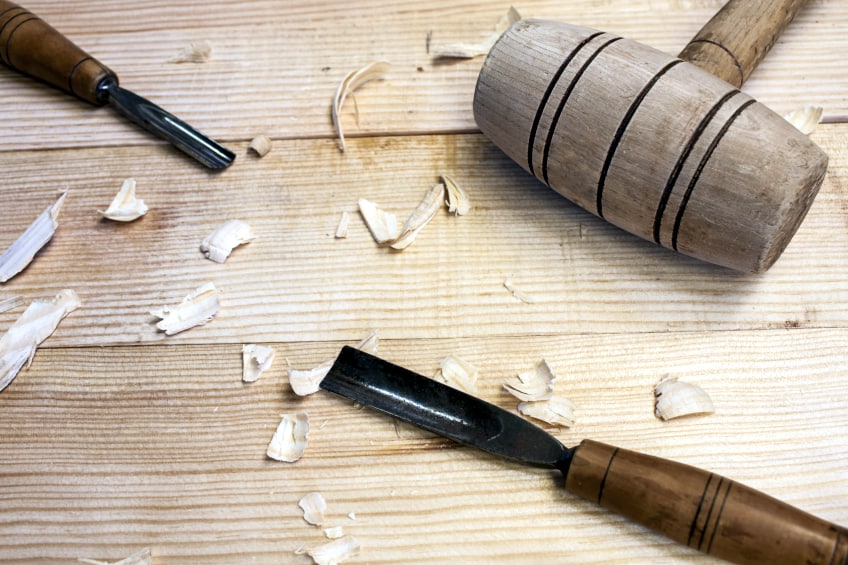
While it might be soft, softwood workbenches do absorb shock a lot better than their hardwood cousins, this means that if you’re working with tools like chisels or hammers on the surface of a softwood workbench it won’t cause your bones to shake. On the other hand, the same mechanism that allows it to absorb impact well (sparsely spaced wood grain) makes it less sturdy than hardwood.
Because the wood grain is less densely packed than hardwood it makes softwood workbench tabletop designs lighter. This lightness means that if you’re in the middle of persuading your workpiece with more vigor than you usually would, it can cause your table to shift in the process, which isn’t great if you’re working with power tools.
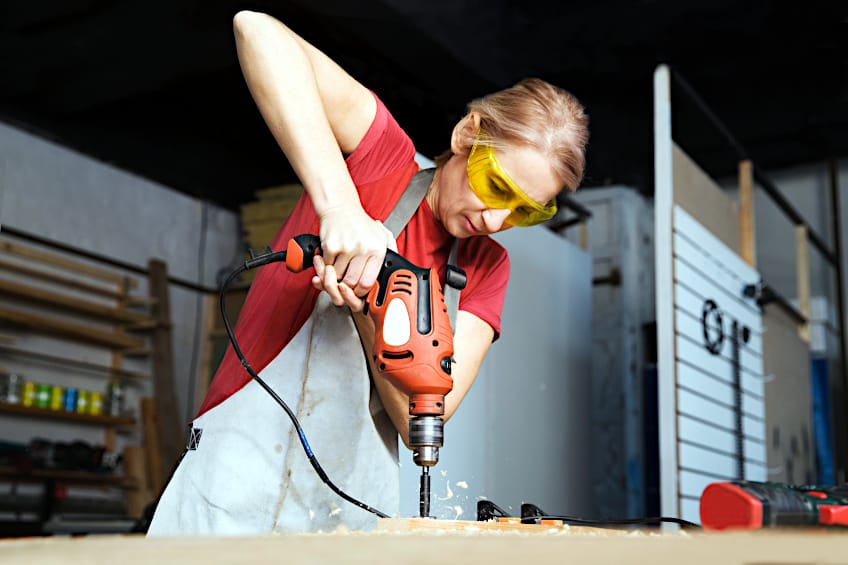
Softwood workbench worktop designs are also far more likely to chip and/or dent compared to hardwood ones since their wood fibers are less dense. This means that regular treatment and pre-emptive sealing of the workbench surface are critical to the longevity of your workbench, which can be a bit of a drag if your work is time-sensitive.
- Easy to work with
- Less expensive than hardwood tabletops
- Easy to maintain
- Lightweight material
- Absorbs impact well
- Not as sturdy as hardwood worktops
- At greater risk of infection by mold and/or insects
- Chips and dents more easily than hardwood
- Requires regular maintenance
- Suitable species are not always readily available
What Are the Best Workbench Wood Species?
Knowing the difference between hardwood and softwood as well as their distinct advantages and disadvantages is all well and good, but which wood species should you choose for your workbench? Let’s have a look at some of the best wood species you can use to make your workbench tabletop and which of their characteristics make them ideal for this application.
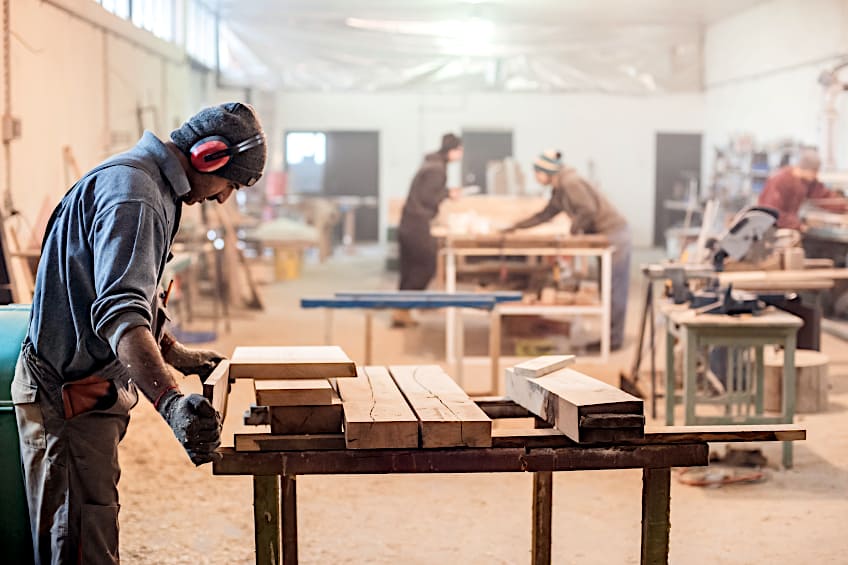
Pine Wood
Pinewood seems to be a crowd favorite regardless of what application it’s being used in, and for good reason. Pine is one of the most readily available, durable, and good-looking wood species out there, so it comes as no surprise that this is one of the most commonly used wood species when it comes to tabletop surfaces.
Pine is one of the easiest woods to work with, and since it looks good it doesn’t need to be treated to look good it doesn’t hurt to add a healthy coat of stain or epoxy to make your workbench surface a bit more durable. Pine wood is also really receptive to fasteners, so using nails and screws to make your workbench sturdier won’t be a problem.
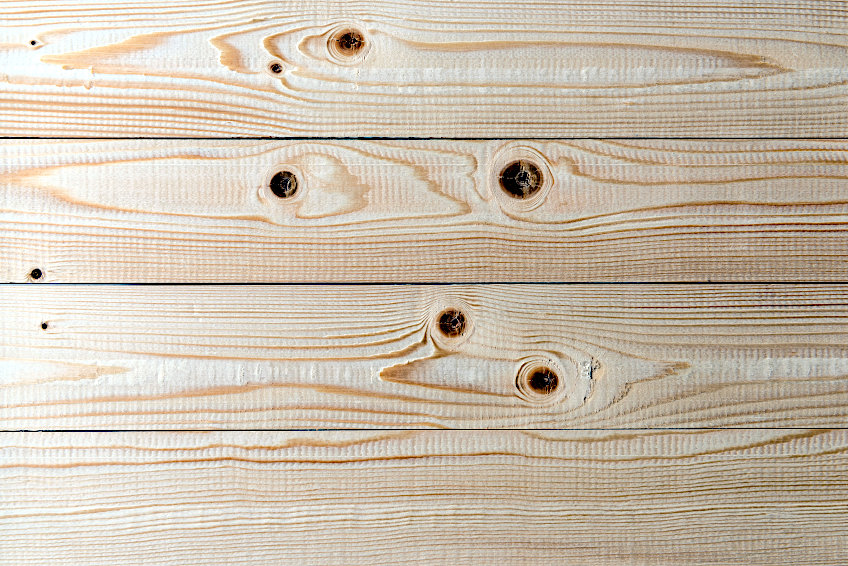
The cool part about pinewood is that even though it’s a softwood, it’s pretty durable and highly resistant to things like rot and decay. This means that you won’t have to do any serious work sealing it, but as we mentioned previously it doesn’t hurt to have some extra protection especially if your workbench will be situated outdoors.
Douglas Fir Wood
If you’re looking for a wood that’s a good all-rounder, why not consider using Douglas fir for your workbench surface? This wood is pretty readily available but doesn’t seem to be quite as popular in North America as it is in South America. This is pretty strange because even though it’s really strong, it’s also really lightweight, which makes it the ideal material for workbench surfaces.
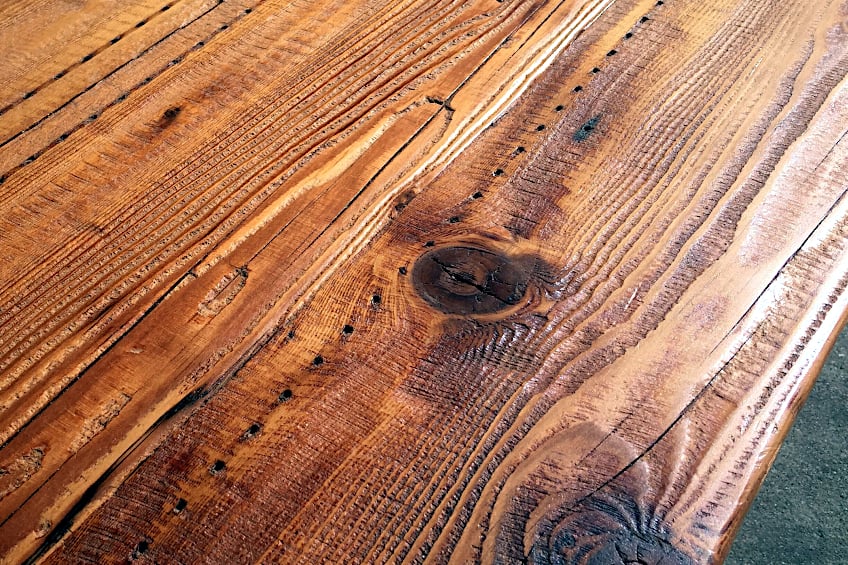
However, those that know about Douglas fir know just how to take advantage of its properties, using it to make exterior decks for their homes, really sturdy countertops, and highly durable workbenches! This wood is also commonly used to make load-bearing pillars for both interior and exterior use.
Douglas fir doesn’t just have to be used in its solid-state either though it can be cut up and mulched to create things like veneer and even plywood. As you’ve probably gathered by now it’s pretty versatile and has been used in various industries for various applications all over the world, so why not give it a try if you’re in the market for a really unique and hard-wearing wood species.
Maple Wood
Maplewood is one of the best-looking wood species out there, featuring a very light brown color with a red-brown tint to it. Its aesthetic isn’t the only reason it’s a good wood to use in workbench construction though – maple wood is really hard and is renowned for its sheer strength throughout the wood crafting community.
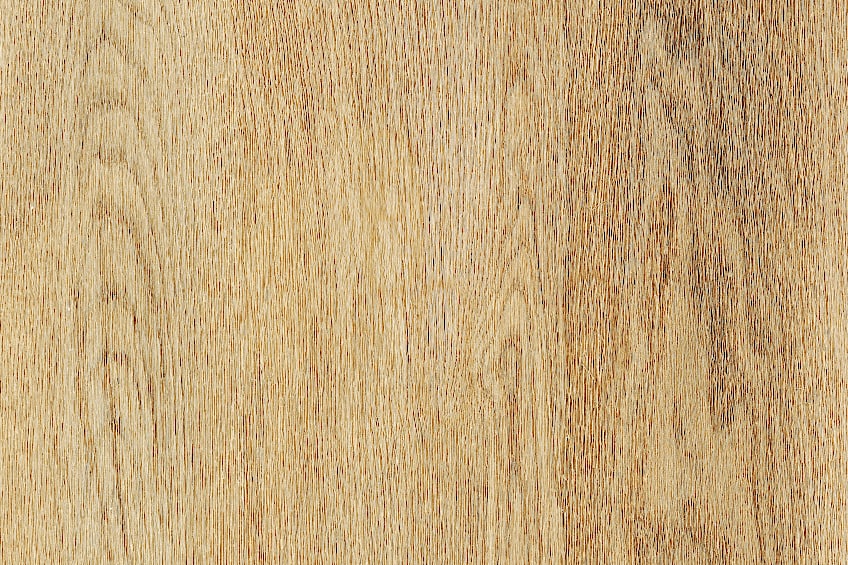
Maple wood also comes in a variety of species for you to choose from. There are well over 140 species of maple wood for you to choose from, but some are easier to come by than others so be sure to check with your lumber supplier before getting your hopes up. Maple is also really low maintenance, which means you won’t have to worry about unsightly scratches and dents.
If you’re looking for a wood species that you can easily modify to suit your personal taste, maple has your back. Maple is really easy to stain and accepts it beautifully, so not only will you have a really hard-wearing workbench capable of taking all the abuse you can throw at it, but it will look really good too.
Beechwood
Beechwood is one of the easiest wood species to work with, and it also happens to be readily available all over the world, including regions like Europe, Asia, and of course, North America. Each of these regions has a variation of beechwood that has slight differences in its internal composition, but their overall characteristics remain largely the same.
Although beechwood has a ton of other qualities, the reason that most people tend to use beechwood in the creation of their workbench is that it looks really good. Beech has been used in various applications over the years but one of the most common applications for it is in the construction of furnishings like chairs, bedside tables, and of course, desks.
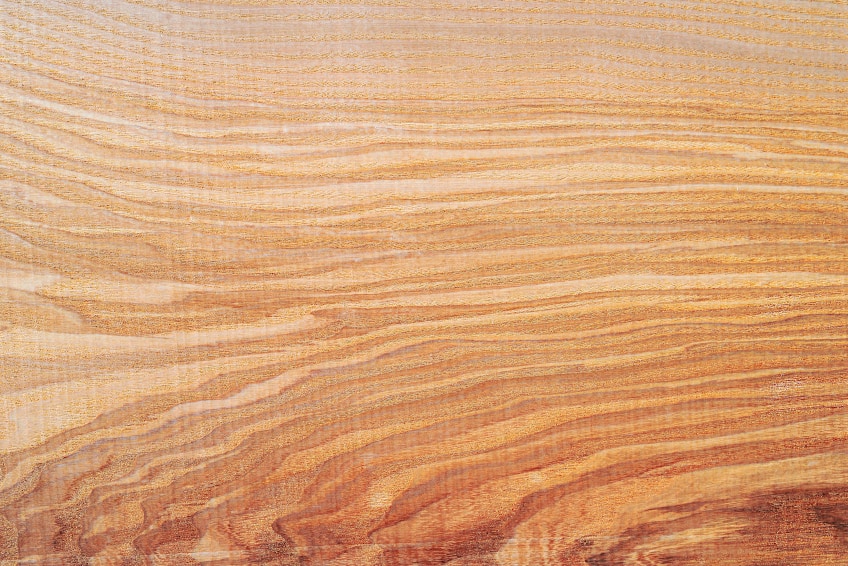
What makes beechwood so sought after, though? Well, as we mentioned, it has a pretty aesthetic to it, featuring a neat, straight grain that radiates a reddish-brown hue. This is topped off with little pores scattered over the surface of the grain, bringing its look together quite nicely. While the grain is coarse in appearance, the texture of this wood is quite smooth, which makes it easy to handle. Beech is also pretty tough and is capable of handling a load with ease.
Teak Wood
If you’re looking for a low-maintenance wood that’s relatively strong and looks really good too, teak might be the wood for you. Teak is a dark, golden brown in appearance and happens to be really tightly grained, which means you won’t have to worry about things like moisture, rot, or insect infestation if you decide to make your workbench desktop out of it.
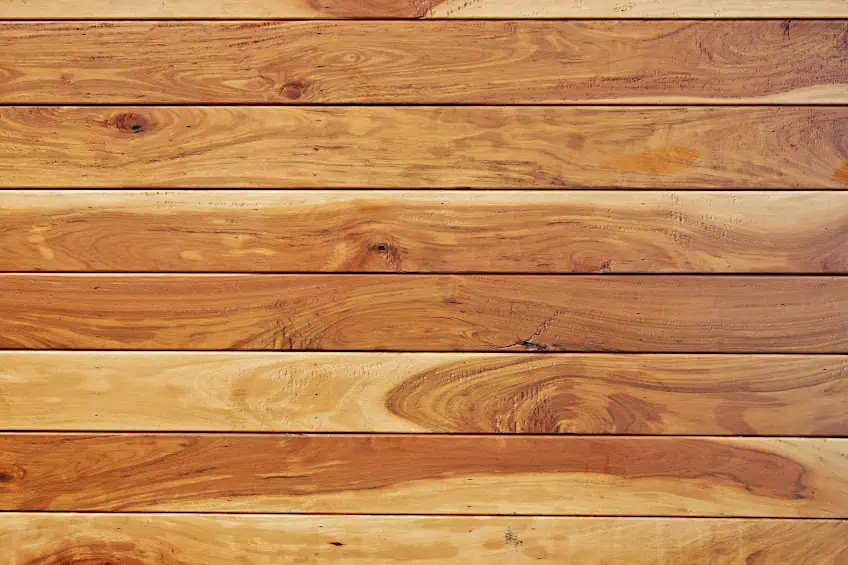
Teak wood also ages really well, which is a quality that’s normally associated with premium hardwood species like oak and walnut, which tend to get lighter over time. This means that if your workbench is well looked after, you can have a beautifully aged wooden workbench for pretty much as long as you live, as well as a cool family heirloom!
Teak wood trees are known to be highly resistant to damage and foul weather, which means that if you choose it to be your workbench surface material, you won’t have to worry about things like moisture, impact, insects, or mold affecting it. Teak also has great shock absorption, so you don’t have to hold back when using hand tools like hammers or chisels.
White Oak Wood
White oak wood is one of the best woods in the world overall. This is arguably the best workbench wood out there, and this isn’t surprising considering that oak is one of the most widely used wood species in the high-end furniture industry overall. Oak is the original hardwood; it’s been around for hundreds of years so you just know that it’s going to make for a great workbench tabletop material.
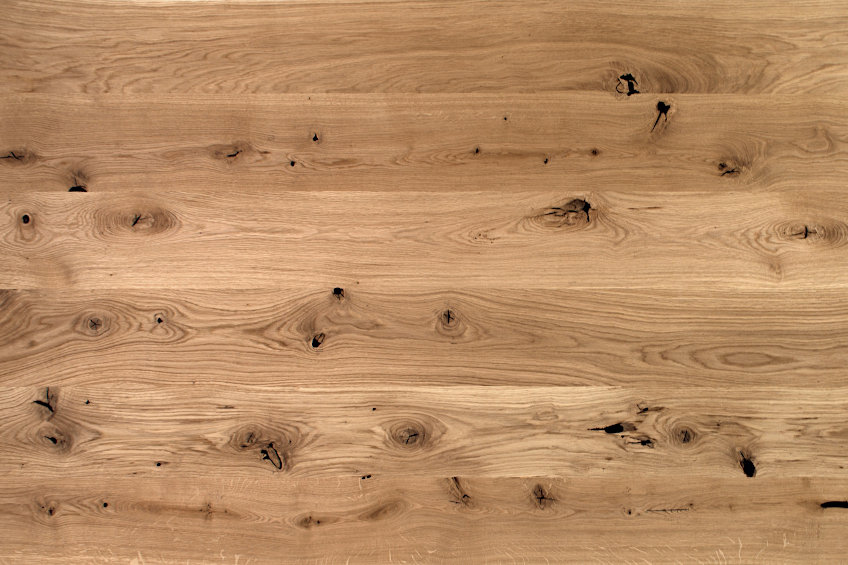
If a rustic aesthetic is what you had in mind, then look no further than oak wood for your tabletop. It has a way of looking aged and cozy while still giving off an almost intimidatingly sturdy presence, and it’s not all show and no go either. Oak is extremely dense, heavy, durable, and hard-wearing, which makes it one of the best choices you could possibly make for a workbench.
If you’re into really large, heavy, woodworking endeavors, then this wood will serve you well both in the short and long term. Oak is exceedingly difficult to damage and tends to have little to no maintenance requirements, which means that if you have a steady flow of work, this bench won’t so much as twitch at the challenge.
How Should Your Workbench Be Designed?
Knowing what type of wood to use for your workbench is all well and good, but you might be wondering about the finer details. The construction and dimensions of your workbench are equally as important as the material it’s made of, so let’s have a look at some of the most commonly asked questions regarding the construction, dimensions, and preservation of a workbench.
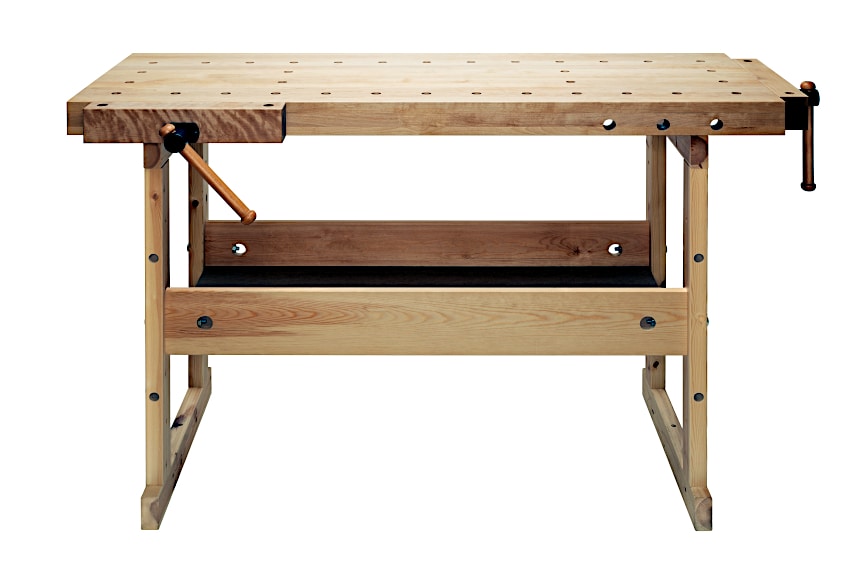
Should Your Workbench Have an Overhang?
This is a good question. If you don’t know what an overhang is, it is essentially the edge of your workbench top that extends further than appears necessary, or in other words, an extended edge. If you’re working with wood or metal, you are going to need this feature considering that you’ll be using things like a vice, C-clamps, and other clamping tools on workpieces fairly regularly (depending on your craft, of course).
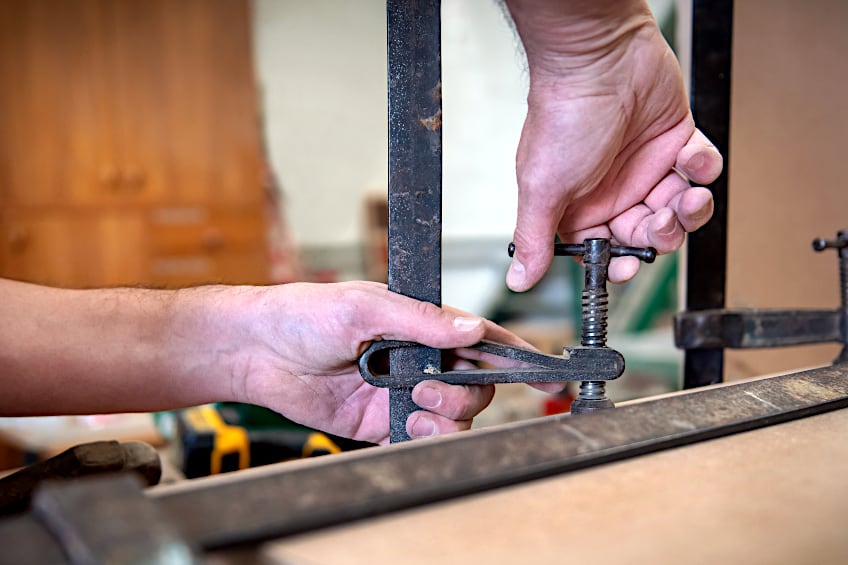
How much overhang should your workbench have? Well, this does depend on the size of your workspace and where your bench will be situated, but generally, your workbench should have around four inches of overhang to accommodate most tools. However, it’s your workbench! You should definitely have an overhang in the interest of convenience, but the size of your overhang depends entirely on your needs and available space.
Can You Use MDF for Your Workbench Top?
This is another really good question and one that a few years ago would have had a completely different answer. MDF is an abbreviation for medium density fiberboard and is essentially wood fibers that have been glued and heat pressed together to form a solid material.
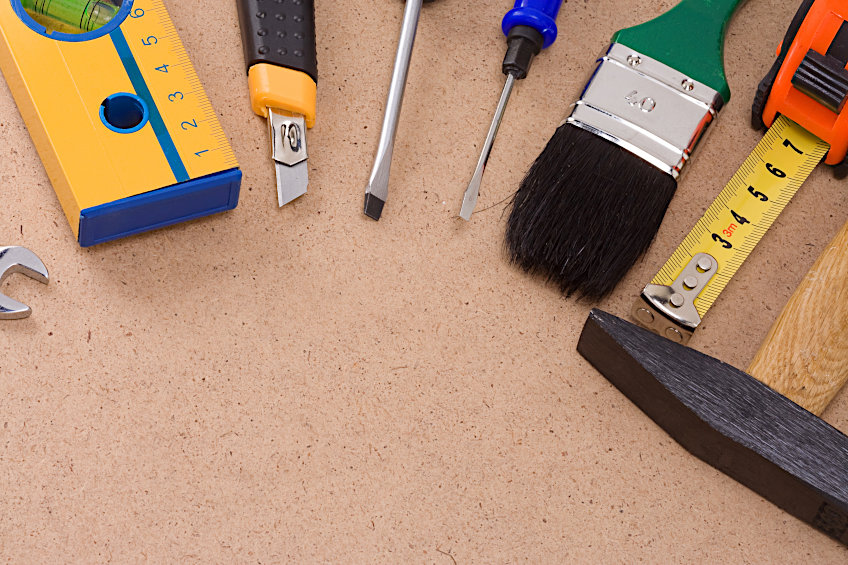
Many crafters scoffed at this material when it was first introduced because it was relatively weak, but these days, MDF has impressive strength and can definitely be used to create a workbench. It should go without saying though that it’s nowhere near as strong as solid wood and should be handled with relative care, so using this material to bear tons of weight is in no way a good idea.
Can You Use Plywood for Your Workbench Top?
Plywood, like MDF, is the butt of many jokes in the wood crafting community since it’s not wood board in the conventional sense. What is plywood? Well, it’s essentially thin layers of wood that have been glued together and heat-treated to form solid wood boards. Now, you might think that this is a pretty flimsy material based on that imagery, but it’s entirely the opposite.
In many ways, plywood is objectively superior to solid woods, and this is because it can be designed to have pretty much any characteristic you want. It can be made with various wood species, which means you can have all the rigidity, flexibility, durability, and longevity you want. Plywood can also be custom-ordered to fit your desired characteristics, and since it’s been engineered, it won’t have any soft spots, which are inherent with solid wood boards.
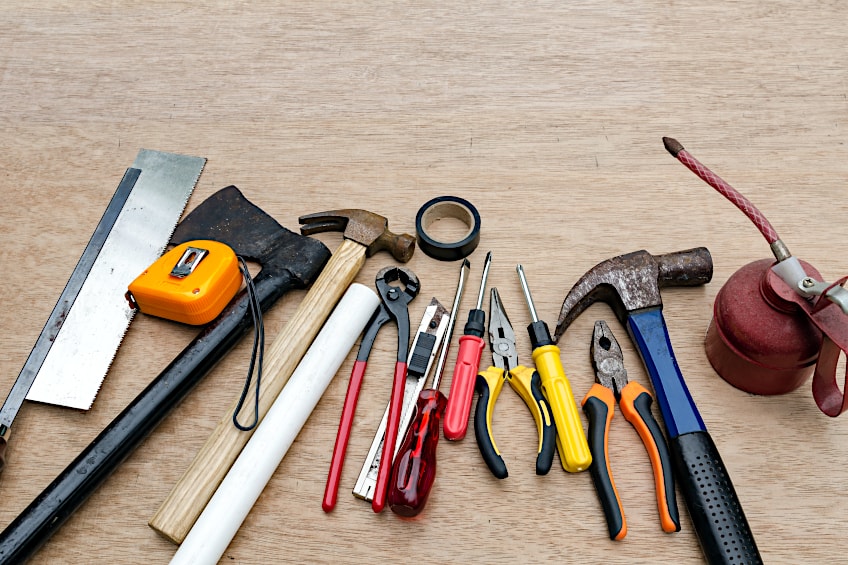
Should You Apply a Finish to Your Workbench?
This is very much up for debate. There are two spheres of thought when it comes to this topic. The first is that it’s a workbench, not a show bench. You won’t exactly be having family dinners and entertaining guests around it, and what is the point of you perusing all of those super tough wood species for the benchtop if you’re scared of denting the surface?
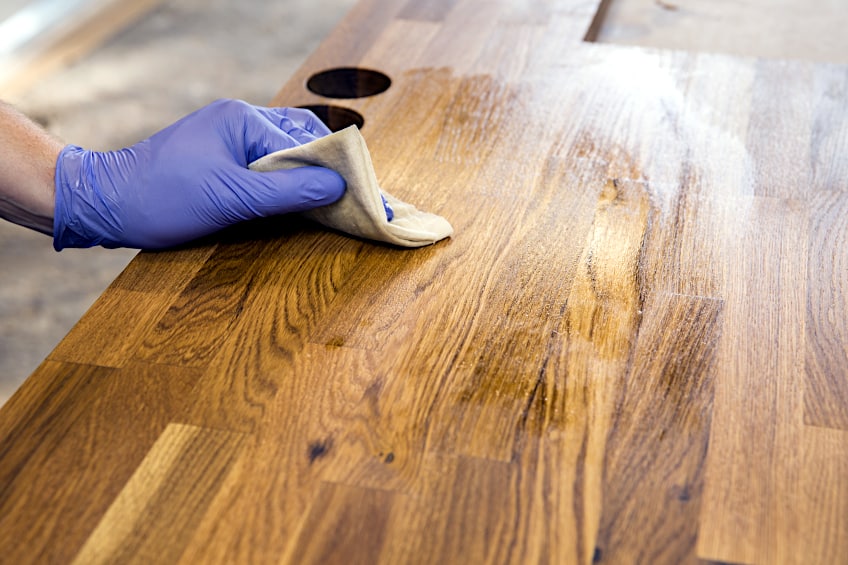
The second point of view is that regardless of the amount of abuse you’re going to throw at your workbench, you still want it to look relatively decent and ensure that it’s easy to clean when you get around to it. If you do want to add a finish to your workbench, then the best way to go about it is to use an oil-based polyurethane sealer. This gives the wood a cool shine to it too, which is always nice.
We should mention that there are a few downsides to using a sealer or wood treatment on the surface of your workbench. Sealer inherently strips the workbench of any surface friction, which means your tools and hands will likely be sliding around the surface after a while, and while you could scuff it up with some sandpaper, it kind of defeats the point of the smooth, shiny finish.
How Thick Should Your Workbench Be?
How thick should your workbench be? Well, this is really up to you. What you’ll be doing with your workbench dictates what thickness you’ll need, but there are a few general guidelines you can follow. Generally, you want your workbench to be around three inches thick to ensure stability while not being too rigid, but this depends on the wood species you’ve chosen to go with.
How do you control the thickness of your workbench? Well, if you’re going to use a solid wood board to make the tabletop, you’re going to have to shave off the necessary amount of material to achieve your desired thickness. If you’re using engineered wood like plywood, you can simply have the board customized to suit your desired thickness or remove layers as you see fit.
Now that you know why using wood for your workbench top is a good idea, what the difference between hardwood and softwood benchtops are, as well as some of the best wood species to use for this application, it’s time for you to get out there and put your newfound skills to the test. Remember to always consider the size of the space you’re working in and the type of work you’ll be doing when making your final decision.
Frequently Asked Questions
Where Can You Buy Wood for Workbench Worktop Applications?
Looking to buy wood for workbench top applications? There are loads of places where you can sample wood species and finishes such as home repair outlets, online lumber stores, private sellers, and even reclaimed wood centers.
Are There Different Types of Workbenches?
Sure! There are loads of workbench types out there for different applications and specialties. These are often different in the way they’re oriented, what they are used for, how they look, and what type of wood is used to make them. There are vanity benches, carpenter’s benches, crafter’s benches, and even garage benches, among many others.
How High Should a Workbench Be off the Floor?
There is a lot of debate around this, but the truth is that your workbench should be a height that suits you and one that is conducive to its intended application. Generally speaking, the given height of a workbench is widely accepted to be around 37 inches, give or take an inch.

I have been into woodworking since 2005 and woodturning since 2011. Because of my love for wood and woodworking, I started woodhappen.com to teach other enthusiasts about how to finish and seal wood, the best woodworking tools, the different types of wood, and everything else related to woodworking! Read more about me here.

